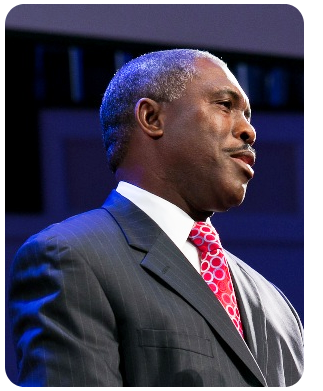The Empty Tomb
Text: “But said the angel: “Don’t be afraid, you seek Jesus of Nazareth, who was crucified. He is risen! He is not here. See the place where they laid Him.” Mark 16:6
Scripture: Mark 16: 1-6
Introduction. Years ago, news was spread around that the bones of Buddha had been discovered. Buddhists throughout the world traveled to India to pay homage. When the supposed bones were brought to India’s most sacred city, multitudes of devotees lined up the streets to prostrate and pay respect. It is not only Buddhists who took the streets to celebrate the finding of the remnant of their ‘savior’. The Muslims also take pride in visiting the remnant of their ‘savior’ yearly. Every devoted Muslim has to visit the tomb of Mohammed at least once in his lifetime. Christianity would fall to pieces if its enemies could find one bone of Jesus Christ in the grave. The empty tomb is the only proof that Jesus can resolve not only the enmity between God and man but also the problem of death. Jesus came not only to save man from sin, but to conquer death on our behalf.
1. The problem of death. Gen.2: 15-17 Man was created in the likeness of God with the possibility to live forever. He was placed in Eden with his wife to cultivate and enjoy the fruits of the Garden. God commanded them not to eat of the “tree of the knowledge of good and evil.”(Gen.2:17) They succumbed to temptation and ate the forbidden fruit. Their disobedience plunged them and the human race into a state of sin and death. The Edenic Covenant was terminated because of their rebellion against God, resulting in spiritual and physical death. The sentence was pronounced on Adam and all his descendants. “By the sweat of your brow you will eat your food until you return to the ground since from it you were taken; for dust you are and to dust you will return.”(Gen.3: 19) The sin of Adam and Eve causes every human being not only to face death someday, but also to be born separated from God. Paul, in his letter to the Corinthians, reiterates the effect of Adam’s sin on humanity. “For as in Adam all die.” (I Co.15: 22a)
2. Christ, a different Sacrificial Lamb. Heb. 10:14 Throughout the Old Testament, the shedding of animal’s blood on behalf of the sinners was necessary to satisfy the holiness of God. The sacrifices of young bulls, goats, and lambs were always the ideal offerings for sins. That ritual was to be repeated many times in one’s life journey. However, the yearly sacrifices were not able to clean once for all, or remove the guilt felt by sinners.
The Epistle to the Hebrews presents Christ as the only sacrifice that will be accepted by God for the remission of sins. “Sacrifices and offerings, burnt offerings and sin offerings you did not desire, nor were you pleased with them” (although the law required them to be made). Then Jesus said, “Here I am, I have come to do your will.” Jesus sets aside the first to establish the second. And by that will, we have been made holy through the sacrifice of the body of Jesus Christ once for all.” (Heb.10: 8-10) Any relationship or hope for eternity with God is possible only through the atoning sacrifice of Jesus Christ, the Righteous One. Christ did not only pay for our sins but He also obtained eternal redemption for us.
3. Importance of the Empty Tomb. Mark 16:6 The sacrifice of Christ on the cross would have been meaningless if He were not able to overcome death.
Ralph Turnbull, in the Pathway to the Cross, tells the story of a Muslim who was talking to a Christian, “We Muslims have one thing that you Christians do not have.”
“What is that?” replied the Christian. The Muslim replied, “When we go to Mecca, we find a coffin and we know that Mohammed lived because his body is in the coffin. But when you Christians go to Jerusalem you find nothing but an empty tomb.”
“Thank you,” said the Christian. “What you said is absolutely true and makes the eternal difference. We find in Jerusalem an empty tomb because our Lord lives and we serve a risen Savior.”
The cross is the unifying symbol of Christianity, but the empty tomb is our assurance that we serve a risen Savior who is the world today. The Apostle Paul, in the 15th Chapter of his first letter to the Corinthians, presents the importance of the Empty Tomb for the Christian faith:
a. The risen Christ assures us of the validity of the Christian faith. I Co.15: 14
b. In the resurrection, the Christian finds assurance of forgiven sin. I Co.15:17
c. The resurrection assures the Christian of immortality. I Co. 15: 20-23
d. The resurrection provides motivation for Christian service. I Co.15: 58
Mary Magdalene and Mary the mother of James received the greatest news that no one ever heard in a graveyard: “…You seek Jesus of Nazareth, who was crucified. He is risen! He is not here. See the place where they laid Him.” Mark 16:6. THE TOMB WAS EMPTY! Alleluia!
Conclusion. The empty tomb destroys the terror of death. Believers in Jesus Christ can face death with confidence, because Christ gives us victory over that dreadful enemy. Jesus came to put the stamp of immortality on humanity. He bodily declared that the grave is not the final resting place of mankind. Jesus is the resurrection and the life. The good news of the empty tomb is that Christ conquered death and hell in our behalf. Because Christ lives we, Christians, can face tomorrow; and our eternity is guaranteed.

